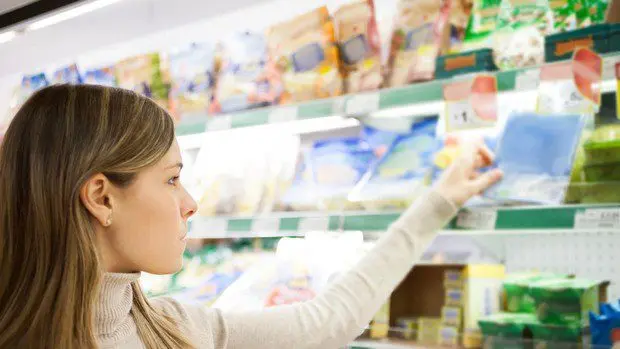Contents
What you should know before using an app that scans food labels in the supermarket
Nutrition
The use of applications to scan food labels in the supermarket is not enough to achieve a healthy diet: prior knowledge and differentiation of the criteria followed to qualify the products is needed

Movements such as “Realfooding”, created by the nutritionist Carlos Ríos, who has put ultra-processed foods in the spotlight or the proliferation of instagramers and influencers who share dietary advice and guidelines on social networks, show that healthy nutrition every time awakens more social interest.
“We live in a food-obsessed society; it is something that is part of our culture, both for the good (gastronomy) and for the bad (disorders or bad practices derived from inadequate nutrition) “, says Raquel Herrera, collaborating professor at the UOC’s Health Sciences Studies . “We are increasingly concerned about being in good health and having enough information about it. This favors initiatives such as «Realfooding»Attract followers among people interested in food in general, sports and health, as well as other specific issues that are increasingly socially relevant, such as internal and food sovereignty. To this must be added other initiatives such as the promotion of gastronomic tourism: it is no longer just about eating, but also about eating well (and flaunting it), ”says Herrera.
This interest is also reflected in the increasingly widespread tendency to “look closely” at the composition of foods and to analyze your labels when making the purchase, a habit that, on the other hand, experts have been recommending adopting for years.
In search of labeling translators
For Eva Espona, nutrition consultant and collaborating professor of the UOC Health Sciences StudiesIt is true that the population is increasingly aware of the need to inquire about the characteristics of the food it eats, “but it is another thing that it is prepared to understand or interpret what it reads. And I’m not just talking about understanding the average nutrient analysis table, but also knowing how to interpret this information with which the ingredient list, as well as understanding the technicalities and acronyms that appear ”.
The reality is that deciphering the contents of the labels is often not easy. To facilitate this task, in some countries options for simpler logos or simplified nutritional labels that have been implemented within the framework of public health policies can be found on the packaging.
Among these initiatives stands out Nutriscore, an food evaluation system that gives a rating to foods based on their composition and classifies them into five categories. «This system is a reality in countries like France and Belgium. In Spain, for the moment, it is voluntary, but a campaign is underway to request the European Commission to be present in all member states. Although with some limitations, Nutriscore has scientific accreditation that supports its use and has been created with a dual purpose: help the consumer to select healthier foods at the time of purchase and stimulate the food industry to improve the nutritional profile of the food it produces, so that they have a better classification, “says Eva Espona, for whom the implementation of this system should be accompanied by an educational campaign aimed at the population so that this tool is as useful as possible, just as it was done in France.
Make the purchase in “scanner mode”
Likewise, and with the same facilitating intention, applications designed to, after scanning the barcode of the product in question with the mobile camera, proliferate to offer an analysis of its composition. “There are a great variety of these applications that use different criteria. Some offer a score solely based on the Nutriscore nutritional note or the degree of processing of the food. Some of them mix different criteria, for example, depending on the Nutriscore nutritional note, if there is presence or absence of additives and if the product has an eco label or not, ”explains Laura Esquius, an expert in nutrition and professor of the Studies of UOC Health Sciences.
According to a recent study prepared by the Organization of Consumers and Users (OCU), the three most popular applications of this type in our country are El CoCo, Yuka and MyRealFood. All have thousands of users and their use has become popular in a very short time. For Eva Espona, «in general these are good tools that can help make a more convenient purchase. Another important advantage is that they can help the food industry to improve the nutritional composition of its products. However, by themselves, they do not have the same effectiveness if the consumer is not previously clear about what the pattern of healthy eating has to be. Furthermore, none of them are perfect and sometimes there are inconsistencies. ‘
According to the “verdict” issued by the OCU, the information provided by these applications is incomplete, which can lead to erroneous assessments. “That is why it is important to know them to choose the most appropriate to our needs or interests based on the classification system or criteria of the foods they use (to know if they have scientific accreditation, their limitations and if they measure what interests us), and later, be able to understand the results they offer ”, says Eva Espona.
For Laura Esquius, these applications favor that more and more people worry about their eating habits and, in this way, they know which foods are best to consume. “They also facilitate day-to-day nutritional decision-making and when choosing between two similar products,” he says.
As for its cons, «in addition to the existence of different evaluation criteria Between the different applications, I would highlight that, in some cases, the information may be out of date, and inaccurate assessments may also be given due to the differences between the information provided by the application and the actual composition of the product, ”explains Esquius.









